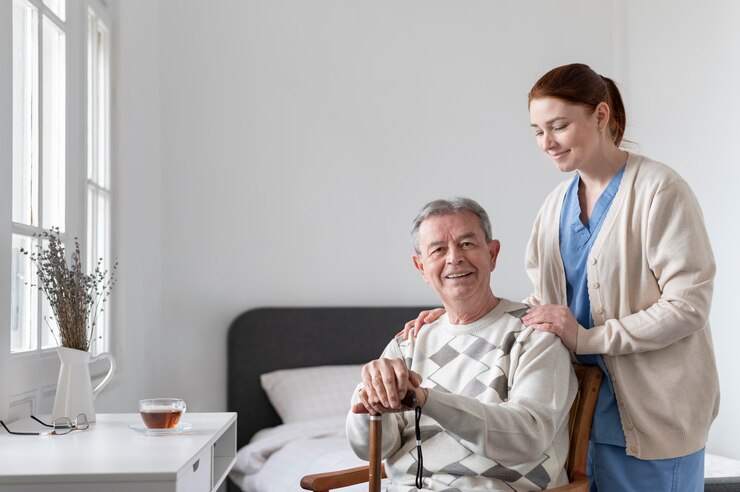Navigating hospice care services can be overwhelming, with numerous options and care plans to consider, all while coping with the emotional weight of a loved one’s end-of-life journey. In Ohio, we offer various hospice care options, including routine home care, continuous care, respite care, and inpatient care, designed to cater to the unique and evolving needs of patients and families. When considering hospice care services, understanding these distinct care types and how they address patients’ specific needs can ensure an informed and thoughtful decision-making process.
In this comprehensive guide, we will explore the characteristics, benefits, and appropriate circumstances for each hospice care option available in Ohio. We will delve into routine home care and its focus on supporting patients in their familiar environment, continuous care for patients requiring around-the-clock assistance during a crisis, respite care to provide a much-needed break for family caregivers, and inpatient care for patients with acute symptoms that cannot be managed at home. By examining each care type, we seek to provide the information necessary for families to make informed decisions and select the most suitable hospice care plan for their loved ones.
A Comprehensive Guide to Routine Home Care, Continuous Care, Respite Care, and Inpatient Care Options in Ohio
1. Routine Home Care: Comfort in Familiar Surroundings
Routine home care is the most common form of hospice care provided in Ohio. It focuses on delivering personalized and comprehensive medical, emotional, and spiritual support to patients in their homes or home-like settings. This approach allows patients to spend their final days in a familiar and comfortable environment, reassuring both the patient and their family. Some key features of routine home care include:
– Interdisciplinary care team: Our skilled hospice care team, consisting of nurses, physicians, social workers, chaplains, and volunteers, works collaboratively to address the patient’s unique needs.
– Patient-centered approach: The hospice care team develops a personalized care plan, incorporating the patient’s and family’s preferences and goals, ensuring a meaningful end-of-life experience.
– Symptom management: Routine home care emphasizes pain and symptom management, helping patients maintain their quality of life and dignity during this challenging time.
2. Continuous Care: Crisis Management and Increased Support
Continuous care focuses on providing intensive care to patients experiencing a crisis or acute symptoms that cannot be managed through routine home care alone. This level of support is available in the patient’s residence and includes:
– Around-the-clock care: Our hospice care team provides 24-hour, continuous support to patients by rendering skilled nursing services and close monitoring.
– Short-term care: Continuous care is a temporary measure, with a primary goal to stabilize the patient’s condition and transition them back to routine home care when appropriate.
– Family support: In addition to providing relief to families during a crisis, continuous care offers guidance and education, ensuring loved ones understand the current situation and can support the patient effectively.
3. Respite Care: Offering Relief for Family Caregivers
Caregiving, although rewarding, can be exhausting, both physically and emotionally. Respite care offers family caregivers temporary relief by allowing patients to receive short-term care in a hospice inpatient facility, nursing home, or other approved environment. Key aspects of respite care include:
– Periodic breaks for caregivers: Respite care generally lasts up to five days, providing a much-needed break for caregivers while ensuring their loved ones receive specialized and compassionate care.
– Opportunity for self-care: Respite care allows caregivers the time and space to rest, recharge, attend to personal matters, or simply enjoy leisure activities that might not be possible otherwise.
– Seamless care transition: Upon completion of respite care, patients can smoothly transition back to their original hospice care setting, whether it be routine home care or continuous care.
4. Inpatient Care: Addressing Acute Symptom Management
Inpatient care serves patients who require acute symptom management or intensive medical intervention, which cannot be adequately provided within a home setting. Inpatient care offers specialized care within a hospice-designated facility, hospital, or nursing home. Important features of inpatient care include:
– Highly skilled medical care: Patients receiving inpatient care benefit from round-the-clock medical supervision and specialized treatment interventions to manage severe symptoms.
– Support for families: While patients are under inpatient care, our hospice team offers emotional support, updates, and education for family members, ensuring they remain connected and informed.
– Transition planning: Once the patient’s symptoms are under control, our hospice care team collaborates with the family to develop a transition plan, guiding the patient back to their preferred care setting seamlessly.
Choosing the Right Hospice Care Option for Your Loved One
Understanding the distinct features and benefits of routine home care, continuous care, respite care, and inpatient care options available in Ohio enables patients and their families to make informed decisions about their end-of-life care journey. Each hospice care option caters to specific needs, preferences, and circumstances, ensuring that patients receive tailored support throughout this challenging process.
Our compassionate team at Comfort Heart Hospice is dedicated to providing personalized care and support, tailored to our Ohio patients’ unique needs and preferences. To learn more about our hospice care options, or to discuss a care plan for yourself or your loved one, please don’t hesitate to contact us—we’re here to guide and support you every step of the way.


Recent Comments